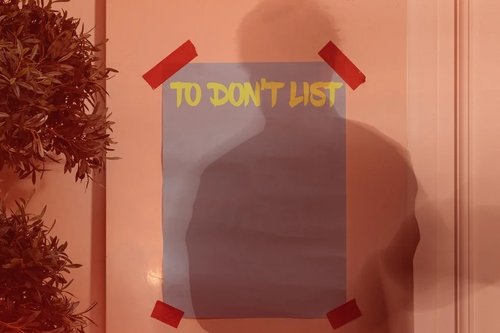Get noticed and get hired: the power of a well-crafted follow-up email
May 09, 2023
6 mins


Freelance writer and translator, ex-recruiter
There’s a fine line between being tenacious and being annoying. Unless you’re super confident, that’s going to be on your mind when thinking about whether you should write an application follow-up email or not. However, according to Personal Brand Strategist and Executive Resume Writer, Annette Richmond, writing a job application follow-up is almost always a good idea. Much like cover letters—which some people will say are a waste of time—a job application follow-up email can give you an edge. If you’re applying for a job you really want at a company you’d love to work for then you want to do everything possible to ensure you get the job, and a follow-email is all part of that strategy. “For every recruiter or person you can find who says nobody will look at it, you’ll be able to find someone else who says they will,” Richmond says.
You have to think of applying for a job like a sales position, except you’re selling your own profile. Did you know that 80% of sales require 5 cold calls? Now do you feel more confident in sending that follow-up? So how exactly do you go about it? What do you include? Here are Richmond’s top ten tips for writing the perfect follow-up email.
1. Get over the fear
While a follow-up email might not yet be standard practice, why wouldn’t you want to do everything you can to land the job you want? Richmond says, “You literally have nothing to lose—the worst that can happen is that you get no response. I can’t think of any reason you wouldn’t want to send one.”
2. Speed is of the essence
While you might think a physical letter to the hiring manager or recruiter sent in the post will make you stand out, Richmond explains that speed is more important. “You want the message to get into the hands of the person it’s intended for quickly.” She recommends sending your follow-up as soon as possible. There might be a fine line between following up effectively and becoming a pest, so leave them time to at least have received and had a chance to look at your application, but there’s nothing wrong with prompting them to take a look if they haven’t done so after a couple of days. It shows you’re keen and motivated.
3. You can follow up more than once
As long as you’re not sending daily emails into the abyss, there’s nothing wrong with sending several job application follow-up emails. Richmond says you shouldn’t be afraid to follow up as many times as you feel appropriate. “Things get lost in spam, people are busy, and they forget, so I would recommend following up a few times. I’ve heard different rules but the bottom line is recruiters would tell you to follow up. You don’t want to be stalking them, but go with your gut.” You never know what might have happened to your follow-up—recruiters sometimes get hundreds of applications for each job, you can’t take it personally if you don’t get a reply and it shouldn’t put you off trying and trying again.
4. Network to help your follow-up stand out
We’ve all heard the expression, “It’s not what you know it’s who you know.” Well, Richmond says we should flip that around and say it’s who knows you. “Every career professional I know advises networking into a company. The idea is to have a list of companies you want to work for and find someone who knows someone who works there who can either follow up for you or connect you with the hiring manager etc.” If you have a connection you can follow up with, or who can follow up on your behalf, it will help your application be more visible.
Tools like LinkedIn are great for making new connections and getting connected with people in companies you want to work for. Richmond adds, “If you’re connected with people from the company you want to work for, you comment on their posts and interact with them. When you send your application you can always send them a message asking for their help.” A LinkedIn survey back in 2016 showed that 85% of jobs were filled through networking.
5. Make sure your grammar and spelling are on point
It goes without saying that your job application follow-up email should be free from typos, spelling mistakes, and grammar issues. Richmond says, “I always recommend avoiding slang and not using too much jargon or too many acronyms in case the reader doesn’t understand what they mean. But it’s also really important to be yourself.” Don’t fall into the trap of using overly formal language or long words for the sake of it. Richmond explains that if a recruiter likes your resume, it’s likely their next stop will be your LinkedIn profile so you want to make sure you are the same person in both types of communication. If you’re trying to be something you’re not because you think that’s what people want, Richmond suggests that people will be able to tell it’s inauthentic. She adds a tip learned from her writing professors: “Don’t use a quarter word when a nickel word will do.”
6. Avoid negativity
Stay positive in your comments, and don’t bad-mouth your previous employer because you want to call attention to something positive at the company you’re applying for. Don’t give negative reasons for wanting to leave or try to apportion blame. It never comes across well. There’s always a way to phrase something without coming across as negative.
7. Share your excitement, what drives you, and something new
When it comes to the content of your job application follow-up email, Richmond recommends sharing your excitement for the role and/or company and telling them what it is that makes you feel that way. Is there something you admire about the company? Is the role exactly what you’ve always been working towards? Has someone told you something about the company that makes you excited?
If there’s something you wished you’d included in your application, include it in your follow-up email. Note any relevant certification or transferable skills that are relevant to the job and weren’t on your resume. Think about the sort of things you might have on your LinkedIn profile.
8. Find a way to stand out
Standing out is about being different, it’s what makes you unique. If you’re writing a job application follow-up and you have something to share this is a great time to do it. Richmond suggests doing your research on the person you are emailing, for example checking out their social media profiles to see if there’s anything that speaks to you. Maybe you have something in common with them. If they talk about rescue dogs on their profile and you’re also involved with that, it will help you to make a connection. Richmond shares an example of a client of hers: he had an anthropology degree, which wasn’t relevant to the position specifically but did give him an in-depth understanding of different cultures, making it a great bonus.
9. Be aware of your personal brand
Remember your job application follow-up email is just one of the many things you can do to land your dream job. In addition, you need a great resume and cover letter, finely tuned social media profiles, and great networking skills. Visit your target employers’ websites regularly and apply for jobs there as well as through job boards and most importantly of all, make sure all your profiles and communications are consistent and authentic to who you are.
10. Don’t be discouraged
Richmond concludes with a few words of encouragement. “Don’t be discouraged because there are so many people for every application. Every market has its challenges; in a buoyant recruitment market people who are just considering something new are more likely to go for it, in a slower market there might be less competition. If you apply and don’t get the job there might still be opportunities later down the line—if the hired person doesn’t work out or if another opportunity arises.” Richmond speaks from personal experience as she was hired for a writing job the second time around as the first person didn’t work out. If the first follow-up yields no response, then keep going. It only takes one yes to make it happen.
Seize the opportunity: crafting a compelling follow-up email
In summary, sending a follow-up email can be an essential step in enhancing your job application chances. By overcoming your fear, ensuring promptness, networking, and maintaining a strong personal brand, you can demonstrate your enthusiasm and commitment to potential employers. Remember to stay positive, genuine, and persistent, as it only takes one successful connection to land your dream job. Embrace the opportunity to stand out, and never be discouraged by the competitive job market. With the right approach and mindset, you can craft the perfect follow-up email that will ultimately help you secure the position you desire.
Photo: Welcome to the Jungle
Follow Welcome to the Jungle on Facebook, LinkedIn, and Instagram, and subscribe to our newsletter to get our latest articles every day!

More inspiration: Applying for jobs

Should you job hunt over the holidays? Tips to beat the new year rush
Searching for a new job to start fresh in 2025? The holiday season might be the right time for you to start the process.
Dec 09, 2024

Introverts & extroverts: Strategies to ace your interview
Job interviews can be tough, whether you're a social butterfly or a quieter introvert. The key to standing out is being yourself.
Aug 20, 2024

Should you be scared of the ghost job trend?
Have you ever been ignored after applying for a job? You may be a victim of the ghost job trend.
Jun 12, 2024

Lost in translation: Decoding bizarre job descriptions
“Candidates with no sense of humor need not apply.” Um …
Jan 25, 2024

Nailing your job search: Writing a to-don’t list for success
Don’t want this, don’t want that … Writing down things you want to avoid in a new job could be your job-hunting key.
Jan 18, 2024
The newsletter that does the job
Want to keep up with the latest articles? Twice a week you can receive stories, jobs, and tips in your inbox.

Looking for your next job?
Over 200,000 people have found a job with Welcome to the Jungle.
Explore jobs